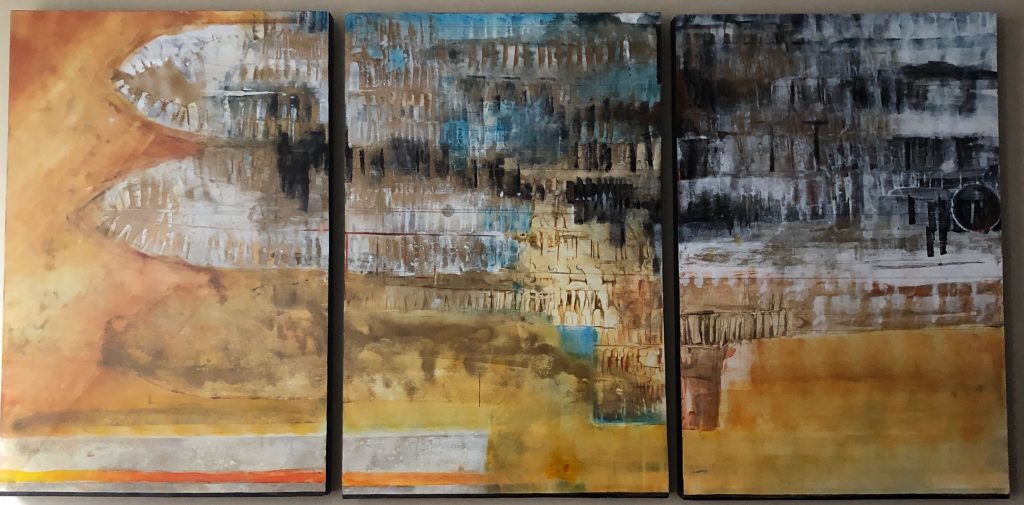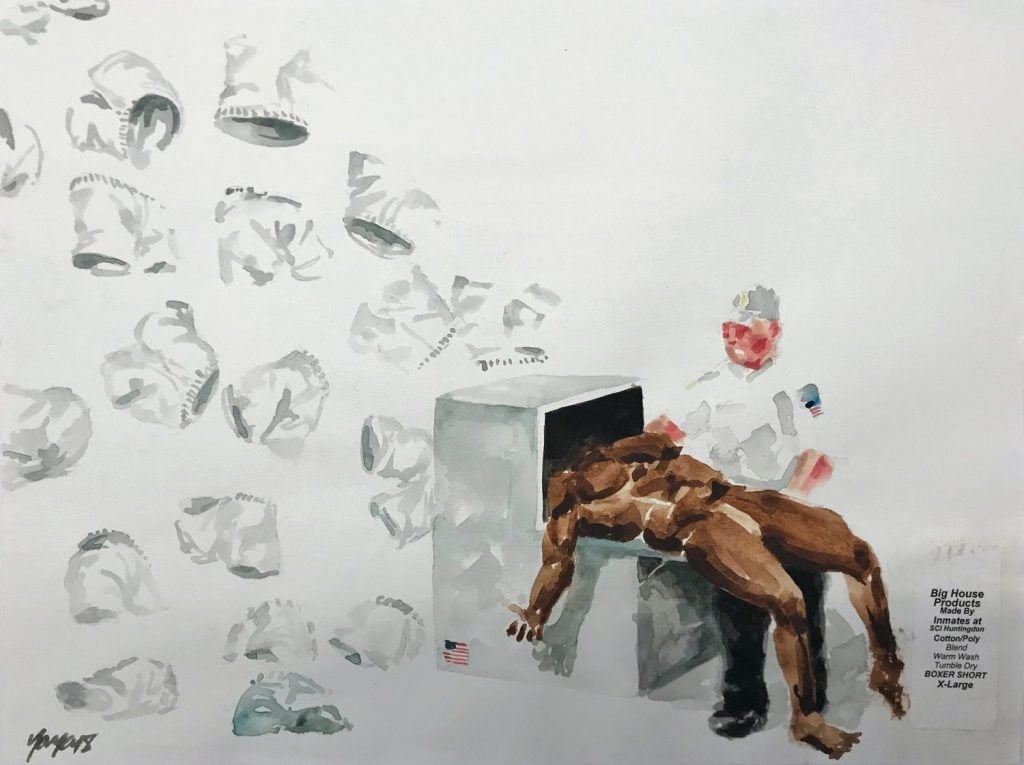While the U.S. Celebrates the End of Slavery on Juneteenth, Incarcerated Artists Depict the Harsh Reality That Forced Labor Persists in Prison

[ad_1]
In his triptych, Ellapsium: grasp & Helm (2016), Jared Owens, a previously incarcerated artist primarily based in New York, superimposes the 1788 diagram of the Brookes slave ship — what artwork historian Cheryl Finley calls “the slave ship icon” — over the blueprint of Fairton Federal Correctional Establishment in New Jersey, the place he served time. On this blended picture, the slave ship’s maintain merges with jail cells, juxtaposing and visually linking the blueprints of the transatlantic slave commerce with the structure of up to date prisons.
Whereas the picture of the slave ship invokes lots of of years of historical past, by bringing it into our current, Owens reminds us that slavery didn’t finish with the Thirteenth Modification — it exists as we speak in prisons the place lots of of hundreds of persons are pressured to work for little or no pay beneath menace of punishment.

Jared Owens, Ellapsium: grasp & Helm (2016). Courtesy of the artist.
As an instructional and a curator, I’ve spent many years exploring the visible tradition of prisons and mass incarceration by means of the work of at present and previously incarcerated artists. To the researcher, archivist, or informal observer, the extent to which slavery permeates jail artwork is putting. Jail artwork debunks the parable that slavery was abolished and makes the fact abundantly clear: slavery persists within the U.S. by means of the pressured captivity and labor of incarcerated folks.
On Juneteenth, we commemorate the top of slavery within the U.S. Not the precise date the Emancipation Proclamation was issued, on January 1, 1863, however two and a half years later, when federal troops arrived in Galveston, Texas to implement it on June 19, 1865.
The vacation is due to this fact a becoming reminder of our nation’s contradictions. However these contradictions proceed as we speak as a result of the Thirteenth Modification, which most imagine abolished slavery, contains an exception that permits for slavery as punishment for against the law.
That’s the political backdrop for the position that slavery performs as we speak in jail artwork — it’s the fact of the incarcerated artist. The pressured labor extracted from incarcerated our bodies ought to trigger alarm, however as a substitute most of American society appears to not care that slavery is embedded into the legal authorized system.
The normalization of pressured labor practices in jail, and the assorted entities that revenue from incarceration, are scrutinized in James “Yaya” Hough’s watercolor work, How Large Home Merchandise Make Boxer Shorts (2018) and I’m the Financial system (2018). The works have been successful entries in an artwork competitors for incarcerated artists hosted by the New York-based non-profit Value Rises.

James “Yaya” Hough, How Large Home Merchandise Make Boxer Shorts (2018). Courtesy of the artist.
In each work, Hough reveals the picture of an unclothed Black man being fed right into a machine by a white correctional officer in uniform. In How Large Home Merchandise Make Boxer Shorts, the man-fed machine produces underwear with an affixed label that reads: “Large Home Merchandise. Made by Inmates.” Regardless of being manufactured by folks incomes pennies an hour, the clothes are then bought again to the incarcerated inhabitants at exploitative costs. In I’m the Financial system, the machine merely produces greenback payments, a extra basic criticism of the brutally extractive jail trade.
Whereas Owens’ Ellapsium captures the architectural continuity of slavery—the warehousing of Black our bodies—Hough’s work supply a stunning and minimalist depiction of recent day slavery. Jail artwork forces us to confront the persistence of enslavement enshrined within the Thirteenth Modification, not merely as an summary authorized idea, however as a actuality as we speak.
This Juneteenth, previously incarcerated artists are working with organizations just like the Philadelphia Mural Arts Mission to assist finish the exception within the Thirteenth Modification. They’re utilizing artwork to arrange across the Abolition Modification, a federal invoice that would actually abolish slavery for all. It’s time we tackle the fact conveyed in jail artwork: slavery continues to be very actual.
Nicole Fleetwood is an creator, curator, and professor at New York College.
Comply with Artnet News on Fb:
Want to stay ahead of the art world? Subscribe to our newsletter to get the breaking news, eye-opening interviews, and incisive critical takes that drive the conversation forward.
[ad_2]
Source link